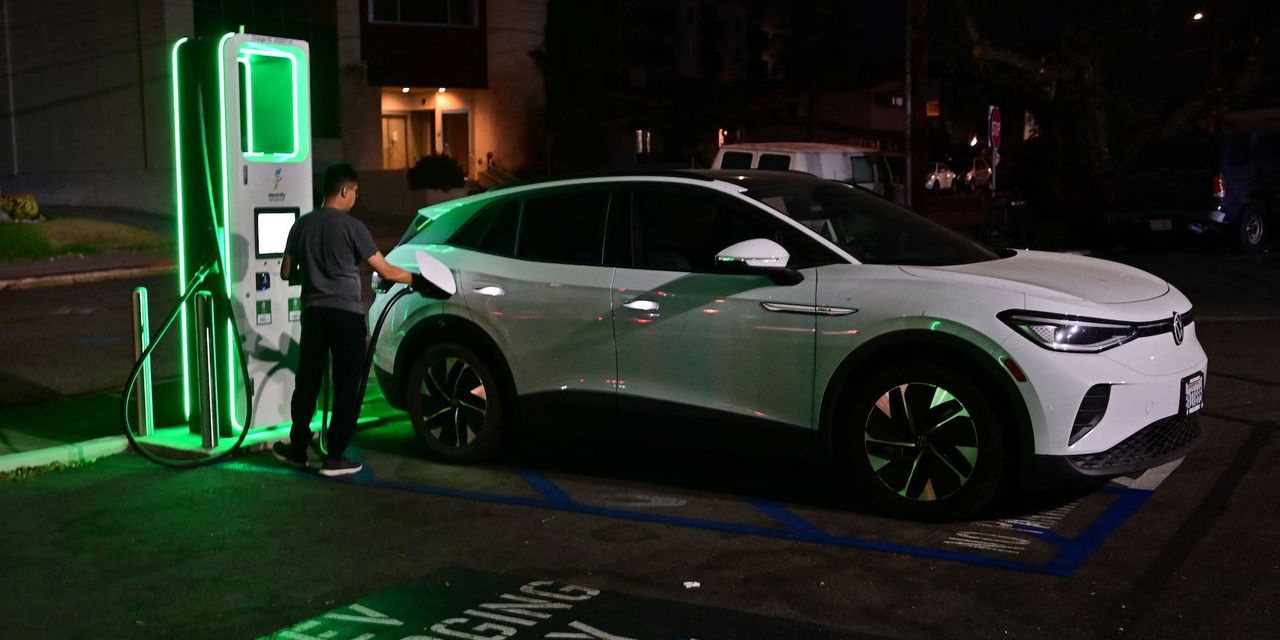“With electricity prices trending up and gas prices going down, most traditional gas-powered vehicles cost less to drive than their EV [electric vehicle] counterparts in the first half of 2023.”
“Every EV model in every state is cheaper to fill than a gas-powered vehicle.”
Both conclusions come from academic studies out in early August. Both come from researchers carefully comparing the cost of travel with gasoline or electricity. But the outcomes couldn’t disagree more starkly. What’s going on here?
The first quote comes from a new study by Anderson Economic Group. AEG calls itself a “boutique consulting firm” that “specializes in public policy, business valuation, and market and industry analysis.” It has studied the differences in fuel costs since 2021.
The second comes from Energy Innovation Policy and Technology LLC. That group calls itself “a nonpartisan energy and climate policy think tank,” providing “customized research and policy analysis to decision-makers and thought leaders to support policy design that reduces emissions at the speed and scale required for a safe climate future.” Its tool is brand new.
The disagreement illustrates how challenging it can be for car shoppers to calculate fuel costs now that they have the option of gas-electric hybrid, plug-in hybrid, and electric cars in nearly every market segment.
As a recent Washington Post analysis shows, “Just calculating the cost of gasoline vs. electricity is misleading. Prices vary by charger (and state). Everyone charges differently. Road taxes, rebates, and battery efficiency all affect the final calculation.”
Also see: Electric vehicles vs. gas-powered cars: Which one is cheaper to buy and own?
The gas-is-cheaper argument
AEG’s study compared the cost of fueling with gasoline, electricity through a home charger, or electricity through more expensive public chargers for several vehicle categories. They found that only owners of luxury cars saved money by going electric, and only if they did most of their charging at home.
The study looked at four types of costs involved in powering EVs and gas-powered vehicles, including:
- The cost of the underlying energy (gasoline, diesel fuel, or electricity)
- State excise taxes charged on fuel and EVs for road maintenance
- The cost of operating a pump or charger
- The cost of driving to and from fueling stations (so-called “deadhead miles”)
The study also used “energy prices, gas taxes, and EV registration fees in the Midwest or state of Michigan.”
Also see: The electric car vs. plug-in hybrid debate: Which should you buy?
The electricity-is-cheaper argument
Energy Innovation says its new EV fill-up tool “knows the average gasoline and electricity prices in a selected state. It also knows a vehicle’s average range on a fully charged battery or tank of gas. It will give the user a true comparison of what it costs to fill up a gas-powered vehicle when compared to EV alternatives.”
The organization designed its tool for users to research their own cars. Researchers ran three scenarios to demonstrate how it works. They compared a gas-powered Toyota Camry
TM,
a gas-powered Honda CR-V
HMC,
and a Ford F-150 to an EV equivalent. They found the EV cheaper to fuel with electricity in all 50 states.
The Washington Post used the tool to dive deeper, modeling a hypothetical 408-mile road trip from San Francisco to Disneyland
DIS,
in a gas-powered Ford
F,
F-150 or an electric Ford F-150 Lightning.
The EV won out, the Post found, but barely. Stopping at higher-cost but faster DC chargers, the Post writer found, “I arrived at the park with $14 more in my pocket than if I had driven its gasoline counterpart.” Stopping at less expensive, slower Level 2 public chargers, “my savings would have been $57.”
See: 10 picks for the best electric cars in 2023
Complex calculations
The differing results highlight the reality that this math isn’t simple, and it isn’t static.
AEG’s more complex calculations include considerations like the opportunity cost that comes from long periods sitting at public chargers. So-called “deadhead miles” — the mileage spent driving to look for the opportunity to refuel — also factor in.
Energy Innovation leaves this consideration out of its study but includes far more information on actual electricity and gas costs.
The Washington Post also notes, “Critics say Anderson’s assessment overestimates or omits key assumptions: his firm’s analysis assumes EV owners use expensive public stations about 40% of the time (the Energy Department estimates about 20%), overstates battery efficiency losses, adds the ‘cost’ of free public chargers in the form of ‘property taxes, tuition, consumer prices or investor burdens’ and ignores government and manufacturing incentives.”
Those factors are in constant flux. Even seemingly simple costs are changing rapidly — the average EV cost about 20% less last month than one year before.
Plus: 12 hatchbacks that get the best gas mileage
Americans now keep their cars longer than ever — the average car on American roads is now 12.5 years old. Car shoppers trying to calculate the cost of ownership between electricity and gas must now predict the cost of both fuels more than a decade from now.
In the end, the Post concludes, “we may never agree on what it costs to refuel an electric vehicle.” That cost may be radically different for a driver living in an urban area with easy access to many chargers and another living in a rural area where they are hard to find. It may even be radically different today and five years from now.
This story originally ran on KBB.com.
Read the full article here








